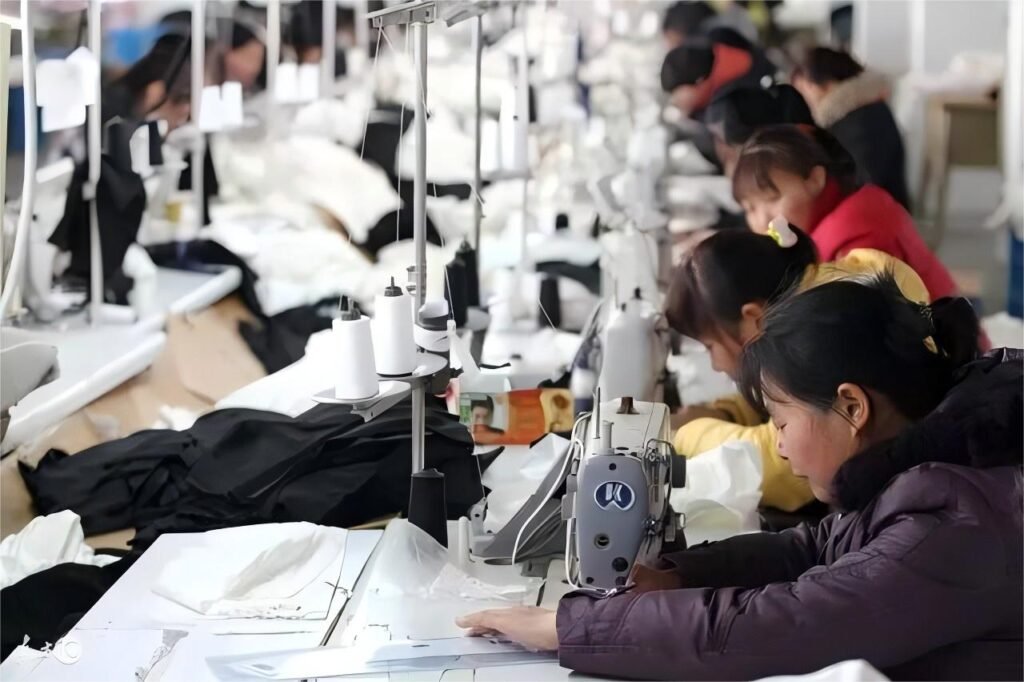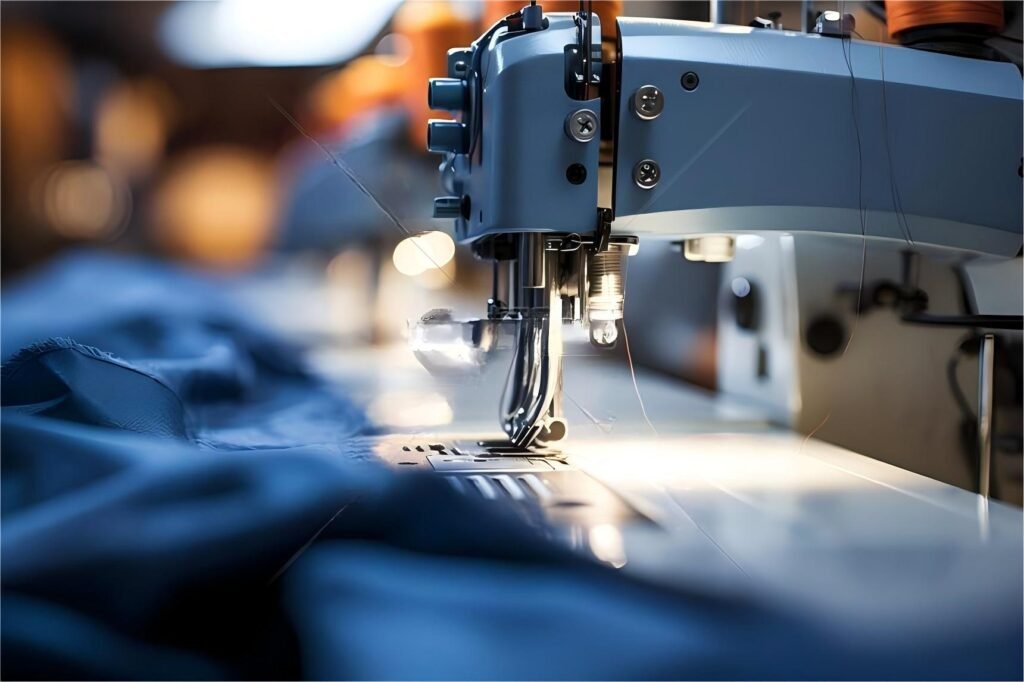No products in the cart.
Custom Yoga Pants
Women’s Wear Manufacturer: Trendy and High-Quality Apparel for Women
Introduction to Women’s Wear Manufacturer: Trendy and High-Quality Apparel for Women
Women’s wear manufacturers play a crucial role in the fashion industry, creating trendy and high-quality apparel for women of all ages and styles. These manufacturers are responsible for designing, producing, and distributing a wide range of clothing items, from everyday essentials to special occasion wear. With their expertise and attention to detail, they ensure that women have access to fashionable and well-made garments that enhance their style and confidence.

The Importance of High-Quality Women’s Wear
High-quality women’s wear is essential for several reasons. Firstly, it ensures that the garments are durable and long-lasting, allowing women to enjoy their favorite pieces for years to come. Quality materials and craftsmanship result in clothing that can withstand regular wear and washing without losing its shape or color.
Secondly, high-quality women’s wear offers a superior fit and comfort. Well-constructed garments are designed to flatter the female form, providing the right proportions and support. This attention to detail enhances the wearer’s confidence and allows them to feel comfortable and at ease in their clothing.
Lastly, high-quality women’s wear reflects the brand’s commitment to excellence and customer satisfaction. When a manufacturer prioritizes quality, it demonstrates their dedication to providing the best possible products to their customers. This commitment builds trust and loyalty among consumers, leading to long-lasting relationships and repeat business.
The Latest Fashion Trends in Women’s Apparel
Women’s fashion is constantly evolving, with new trends emerging each season. Women’s wear manufacturers stay up-to-date with the latest fashion trends to ensure that their collections are relevant and appealing to their target audience. Some of the current trends in women’s apparel include:
1. Sustainable fashion: With increasing awareness about environmental issues, sustainable fashion has gained popularity. Women’s wear manufacturers are incorporating eco-friendly materials and production processes into their collections, offering stylish options that are also environmentally conscious.
2. Athleisure: The athleisure trend, which combines athletic and leisurewear, continues to dominate the fashion scene. Women’s wear manufacturers are creating comfortable yet stylish activewear pieces that can be worn both in and out of the gym.
3. Bold prints and colors: Vibrant prints and bold colors are making a statement in women’s fashion. Manufacturers are experimenting with eye-catching patterns and hues to add excitement and personality to their collections.
4. Gender-neutral fashion: Gender-neutral fashion is breaking traditional boundaries, offering clothing options that can be worn by individuals of any gender. Women’s wear manufacturers are embracing this trend by creating versatile and inclusive pieces that cater to a diverse range of customers.
Manufacturing Process: From Design to Production
The manufacturing process of women’s wear involves several stages, starting from the initial design concept to the final production of the garments. Each step requires careful planning, coordination, and attention to detail to ensure that the end product meets the brand’s standards and customer expectations.
1. Design: The design phase involves creating sketches, selecting fabrics, and determining the overall aesthetic of the collection. Designers work closely with the manufacturer to bring their vision to life, considering factors such as market trends, target audience, and brand identity.
2. Pattern making: Once the designs are finalized, pattern makers create templates for each garment. These templates serve as a blueprint for cutting and sewing the fabric, ensuring consistency and accuracy in the production process.
3. Fabric sourcing: Women’s wear manufacturers carefully select fabrics that align with the desired quality, comfort, and aesthetic of the collection. They consider factors such as durability, texture, colorfastness, and sustainability when choosing materials.
4. Cutting and sewing: After the fabric is sourced, it is cut according to the patterns and then sewn together to create the garments. Skilled seamstresses and tailors ensure that each piece is assembled with precision and attention to detail.
5. Quality control: Throughout the production process, quality control measures are implemented to ensure that each garment meets the brand’s standards. Inspections are conducted at various stages, including fabric inspection, pattern matching, stitching quality, and overall finish.
6. Finishing touches: Once the garments are assembled, finishing touches such as buttons, zippers, and embellishments are added. This stage adds the final touches that enhance the overall look and functionality of the garments.
Sustainable Practices in Women’s Wear Manufacturing
In recent years, there has been a growing emphasis on sustainability in the fashion industry. Women’s wear manufacturers are increasingly adopting sustainable practices to minimize their environmental impact and promote ethical production methods. Some of the sustainable practices in women’s wear manufacturing include:
1. Use of eco-friendly materials: Manufacturers are opting for organic, recycled, and biodegradable materials to reduce the use of harmful chemicals and minimize waste. Fabrics such as organic cotton, bamboo, and recycled polyester are gaining popularity for their sustainable properties.
2. Ethical sourcing: Women’s wear manufacturers are prioritizing ethical sourcing by partnering with suppliers who adhere to fair trade practices and ensure safe working conditions for their employees. This commitment to ethical sourcing promotes social responsibility and supports the well-being of workers in the supply chain.
3. Waste reduction: Manufacturers are implementing strategies to reduce waste throughout the production process. This includes recycling fabric scraps, minimizing packaging materials, and optimizing cutting techniques to maximize fabric utilization.
4. Energy-efficient production: Women’s wear manufacturers are investing in energy-efficient machinery and technologies to reduce their carbon footprint. This includes using renewable energy sources, optimizing production schedules, and implementing energy-saving practices in their facilities.

The Role of Technology in Women’s Wear Manufacturing
Technology plays a significant role in women’s wear manufacturing, enabling manufacturers to streamline processes, improve efficiency, and enhance the overall quality of their products. Some of the key technologies used in women’s wear manufacturing include:
1. Computer-Aided Design (CAD): CAD software allows designers to create digital sketches and patterns, making the design process more efficient and accurate. It enables quick modifications, pattern grading, and visualization of the final product before production.
2. 3D Printing: 3D printing technology is revolutionizing the fashion industry by enabling the creation of intricate and customized designs. Women’s wear manufacturers can use 3D printers to produce prototypes, accessories, and even entire garments, reducing waste and production time.
3. Automated Cutting and Sewing Machines: Automated cutting and sewing machines improve production efficiency by reducing human error and increasing speed. These machines can accurately cut fabric according to the patterns and sew garments with precision, resulting in consistent quality and faster turnaround times.
4. Supply Chain Management Systems: Technology-based supply chain management systems help manufacturers track and manage inventory, streamline production schedules, and optimize logistics. This ensures timely delivery of products and minimizes disruptions in the supply chain.
Collaborations with Designers: Creating Unique Collections
Collaborations between women’s wear manufacturers and designers have become increasingly popular in the fashion industry. These collaborations bring together the expertise and creativity of both parties, resulting in unique and highly sought-after collections. By partnering with renowned designers, women’s wear manufacturers can tap into new markets, attract a wider customer base, and elevate their brand image.
Designers bring their distinct aesthetic and design sensibilities to the collaboration, while manufacturers contribute their technical expertise and production capabilities. This synergy allows for the creation of innovative and fashion-forward collections that resonate with consumers.
Collaborations often involve limited-edition capsule collections, where designers and manufacturers work together to create a curated selection of garments that reflect the designer’s vision and the manufacturer’s craftsmanship. These collections are highly anticipated by fashion enthusiasts and often sell out quickly, creating a sense of exclusivity and desirability.
Customization Options: Tailoring Women’s Wear to Individual Preferences
Women’s wear manufacturers are increasingly offering customization options to cater to individual preferences and unique style choices. Customization allows customers to personalize their garments, ensuring a perfect fit and reflecting their personal taste. This trend is driven by the desire for individuality and the need for clothing that aligns with one’s body shape, lifestyle, and cultural preferences.
Manufacturers offer various customization options, such as choosing the fabric, color, silhouette, and embellishments of a garment. Some manufacturers even provide made-to-measure services, where customers can have their garments tailored to their specific measurements.
Customization not only enhances the customer’s shopping experience but also reduces the likelihood of returns and exchanges, as the garments are made to the customer’s exact specifications. This personalized approach to women’s wear manufacturing fosters a stronger connection between the brand and the customer, leading to increased customer satisfaction and loyalty.

Quality Control Measures: Ensuring Excellence in Every Piece
Maintaining high-quality standards is paramount for women’s wear manufacturers. Quality control measures are implemented at every stage of the manufacturing process to ensure that each garment meets the brand’s expectations and customer requirements.
Fabric inspection is the first step in quality control, where manufacturers check for any defects or inconsistencies in the fabric. This ensures that only high-quality materials are used in the production process.
Pattern matching is another crucial aspect of quality control. Manufacturers ensure that patterns align correctly at seams and across different garment pieces, ensuring a cohesive and visually appealing final product.
Stitching quality is closely monitored during the sewing process. Seamstresses and tailors check for even stitching, secure seams, and proper thread tension to ensure that the garments are durable and long-lasting.
Overall finish and attention to detail are essential in quality control. Manufacturers inspect each garment for loose threads, proper hemming, and accurate placement of buttons, zippers, and other finishing touches. This meticulous inspection ensures that the garments are flawless and ready for distribution.
Distribution and Retail: Making Trendy Apparel Accessible
Women’s wear manufacturers work closely with retailers and distributors to make their trendy apparel accessible to a wide range of customers. Distribution channels include physical retail stores, e-commerce platforms, and wholesale partnerships.
Physical retail stores allow customers to experience the garments firsthand, try them on, and receive personalized assistance from sales associates. Women’s wear manufacturers collaborate with retailers to ensure that their collections are displayed prominently and attractively, creating an inviting shopping environment.
E-commerce platforms have become increasingly popular for women’s wear manufacturers, providing a convenient and accessible way for customers to browse and purchase their products. Manufacturers invest in user-friendly websites, secure payment systems, and efficient logistics to ensure a seamless online shopping experience.
Wholesale partnerships with department stores, boutiques, and online marketplaces allow women’s wear manufacturers to reach a broader customer base. These partnerships often involve bulk orders and distribution agreements, enabling manufacturers to expand their reach and increase brand visibility.
Customer Feedback and Satisfaction: Building Long-lasting Relationships
Women’s wear manufacturers value customer feedback and satisfaction as they strive to build long-lasting relationships with their clientele. Feedback provides valuable insights into customer preferences, concerns, and suggestions for improvement. Manufacturers actively seek feedback through surveys, social media engagement, and customer service interactions.
By listening to their customers, manufacturers can make informed decisions about product development, design choices, and overall brand strategy. This customer-centric approach ensures that the garments meet the needs and expectations of the target audience, leading to higher customer satisfaction and loyalty.
Manufacturers also prioritize excellent customer service to enhance the overall shopping experience. Prompt responses to inquiries, efficient handling of returns and exchanges, and personalized assistance contribute to a positive customer experience. These efforts build trust and loyalty, encouraging customers to become brand advocates and repeat buyers.
Future Outlook: Innovations and Trends in Women’s Wear Manufacturing
The future of women’s wear manufacturing is marked by continuous innovation and evolving trends. Manufacturers are embracing new technologies, sustainable practices, and customer-centric approaches to stay ahead of the curve. Some of the key trends and innovations to watch out for include:
1. Virtual and augmented reality: Virtual and augmented reality technologies are revolutionizing the shopping experience. Women’s wear manufacturers are exploring virtual fitting rooms and interactive product visualization to allow customers to try on garments virtually and make informed purchasing decisions.
2. Smart textiles: Smart textiles, embedded with sensors and technology, are gaining traction in women’s wear manufacturing. These textiles offer functionalities such as temperature regulation, moisture-wicking, and even health monitoring. Manufacturers are incorporating smart textiles into their collections to provide added value and convenience to customers.
3. On-demand manufacturing: On-demand manufacturing allows women’s wear manufacturers to produce garments in response to customer orders, reducing waste and inventory costs. This approach enables customization and personalization on a larger scale, catering to individual preferences and reducing overproduction.
4. Circular fashion: Circular fashion aims to create a closed-loop system where garments are designed, produced, and recycled in a sustainable manner. Women’s wear manufacturers are exploring circular fashion initiatives such as garment recycling programs, upcycling, and rental services to minimize waste and promote a more sustainable fashion industry.
In conclusion, women’s wear manufacturers play a vital role in the fashion industry, creating trendy and high-quality apparel for women. They prioritize high-quality standards, stay updated with the latest fashion trends, and employ sustainable practices to meet customer expectations. Through collaborations with designers, customization options, and excellent quality control measures, manufacturers ensure that each garment is unique, well-fitting, and visually appealing. By embracing technology, building strong distribution networks, and prioritizing customer feedback and satisfaction, manufacturers foster long-lasting relationships with their customers. The future of women’s wear manufacturing is marked by continuous innovation, sustainability, and customer-centric approaches, ensuring that women have access to fashionable and well-made apparel that enhances their style and confidence.
